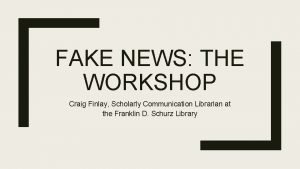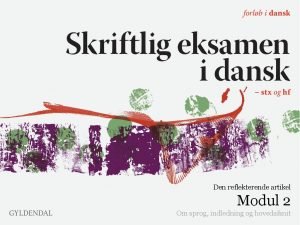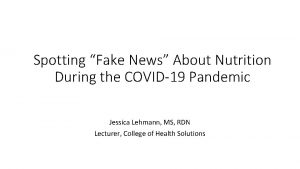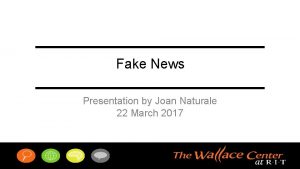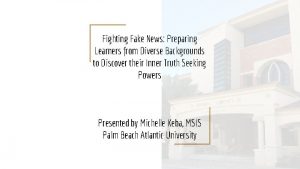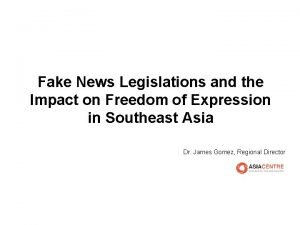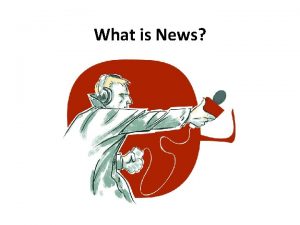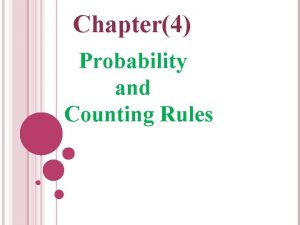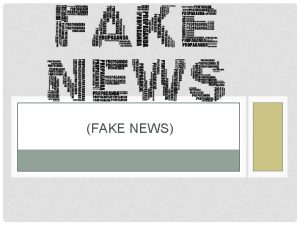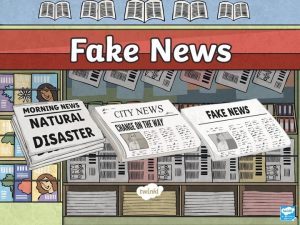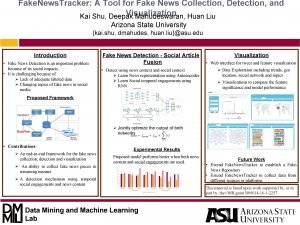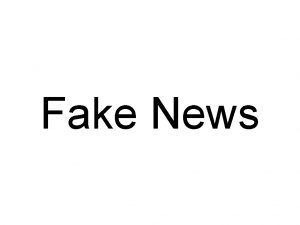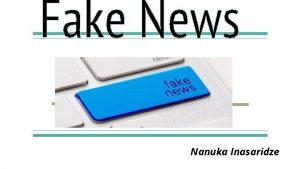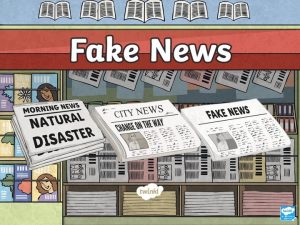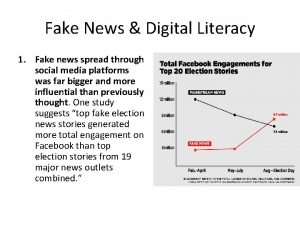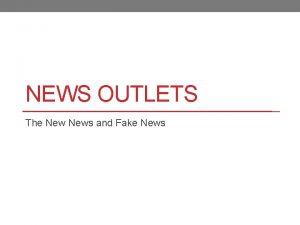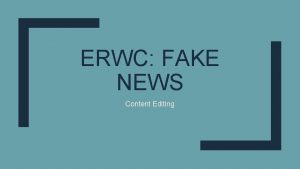Lesson 2 Fake News Content Fake News Fake











- Slides: 11

Lesson 2 Fake News Content

Fake News • Fake News is content that is intentionally misleading, sensationalized, or deliberately false. • Results from a 2016 Buzzfeed survey found that “fake news headlines fool American adults about 75% of the time. ”

Satire and Parody • Satire: “Typically uses humor or exaggeration to present audiences with news updates. ” • Parody: “Plays on the vague plausibility of the news item. “ • Unlike other types of misinformation, satire and parody have no intention to cause harm.

Fabrication • “Has no factual basis but the stories are published in the style of news articles to create legitimacy. ” • This type of information is often spread for the purpose of financial gain or now, more frequently, by artificial intelligence online sources.

Manipulation • “Uses real images or videos to create a false narrative. ” • Despite there being some truth to manipulated content, using an adaption of imagery to sensationalize a story still can mislead consumers to develop a false connection.

Propaganda • “News stories which are created by a political entity to influence public perceptions. ” • Propaganda often may have some plausible truth to it; however, the information is paired with strong political bias intended to persuade those who read and, or, see the presented information.

Dissemination • 64% of U. S. adults blame fake news stories for confusion surrounding basic facts about politics or events in the country. • A Buzz. Feed News analysis found that the top 20 fake news stories of 2016 received more engagement than the top 20 legitimate news stories, featured by sources including The New York Times, Washington Post, Huffington Post, NBC News, and others. • The leading networking site, Facebook, with well over 1 billion users, now is said to contribute to providing news to 44% of the population.

PR Preparedness Plan • Have a contingency plan and expect the unexpected. • Establish and maintain a relationship with influencers to build credibility. • Learn and listen to all possible sides of an issue.

Page Principles 1. 2. 3. 4. 5. 6. 7. Tell the truth. Prove it with action. Listen to stakeholders. Manage for tomorrow. Conduct public relations as if the whole enterprise depends on it. Realize an enterprise's true character is expressed by its people. Remain calm, patient and good-humored.

• Compare and contrast the different types fake news. For Discussion • Reflect on your own experiences and encounters with fake news stories. Think of an instance for each level of fake news and analyze their individual public relations approach. • Of all the Page Principles, which do you think is the most important ethical value for public relation professionals to uphold and why?

Resources • Ewing, M. , & Lambert, C. A. (2019, September). Listening in: Fostering influencer relationships to manage fake news. Public Relations Journal, 12(4). Retrieved from https: //prjournal. instituteforpr. org/wp-content/uploads/Listening-In-Updated-090519. pdf • Fullerton, J. A. , Mc. Kinnon, L. M. & Kendrick, A. (2020). Media literacy among public relations students: An analysis of future PR professionals in the post-truth era. Journal of Public Relations Education, 6(2), 1 -25. • Page, A. W. (n. d. ). The Page Principles. Retrieved July 10, 2020, from https: //www. bellisario. psu. edu/page-center/about/arthur-w-page/the-page-principles • Silverman, C. (2016, Nov. 16). This analysis shows how viral fake election news stories outperformed real news on Facebook. Buzz Feed News. Retrieved from https: //www. buzzfeednews. com/article/craigsilverman/viral-fake-election-news-outperformedreal-news-on-facebook. • Tandoc, E. C. , Lim, Z. W. , & Ling, R. (2017). Defining “Fake News”. Digital Journalism, 6(2), 137 -153. doi: 10. 1080/21670811. 2017. 1360143
